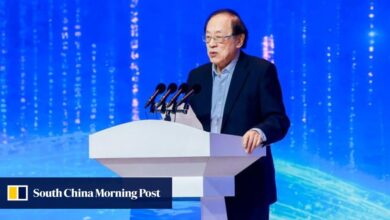China’s new green-transition guidelines show how the embattled industry will power on

The main objectives aim to achieve “remarkable results” in the green evolution by 2030, and to basically establish a green, low-carbon and circular development economic system by 2035, according to Xinhua.
Environmental and climate issues are increasingly politicised, and green trade barriers are escalating
“Environmental and climate issues are increasingly politicised, and green trade barriers are escalating,” the official warned.
In 2023, China made more than 80 per cent of solar panels in the world, along with 75 per cent and 60 per cent of the world’s lithium batteries and electric vehicles, respectively.
That dominance has sparked wariness and tariff actions from the United States and the European Union, which have accused China of strangling their own manufacturing sectors via overcapacity in its new-energy industries.
Compared with old targets in China’s green transformation, the new guidelines particularly highlight the “guiding role of industry and consumers”, said a note from Huatai Securities.
For the first time, the document proposed that the scale of the energy-conservation and environmental-protection industry will reach about 15 trillion yuan (US$2.09 trillion) by 2030.
It also set a target for the annual utilisation of bulk solid waste, which will reach about 4.5 billion tonnes by 2030.
Meanwhile, it unveiled detailed plans for promoting green consumption, including expanding the scope and scale of green products in government procurements, and encouraging green consumption among consumers through measures such as issuing consumption coupons.
The guidelines also reaffirmed existing goals such as raising the share of non-fossil consumption to 25 per cent by 2030, and gradually reducing coal consumption in the next five years.
China’s heavy reliance on coal power is still one of the biggest challenges facing its green transformation, the NDRC official said.
Despite an aggressive push to install wind and solar farms in recent years, the substitution rate for new energy in the overall power supply has been slow, with the unpredictable nature of these sources leading to consumption bottlenecks.
Thermal power remains the backbone of China’s electricity grid. In 2023, the share of thermal power was 69.9 per cent, down by only 1.3 percentage points compared with 2020, according to a Fitch Ratings report earlier this year.
And it said the shares of wind and solar power were 9.1 per cent and 3.3 per cent last year, respectively, 3.5 and 1.4 percentage points higher than in 2020.
Source link




